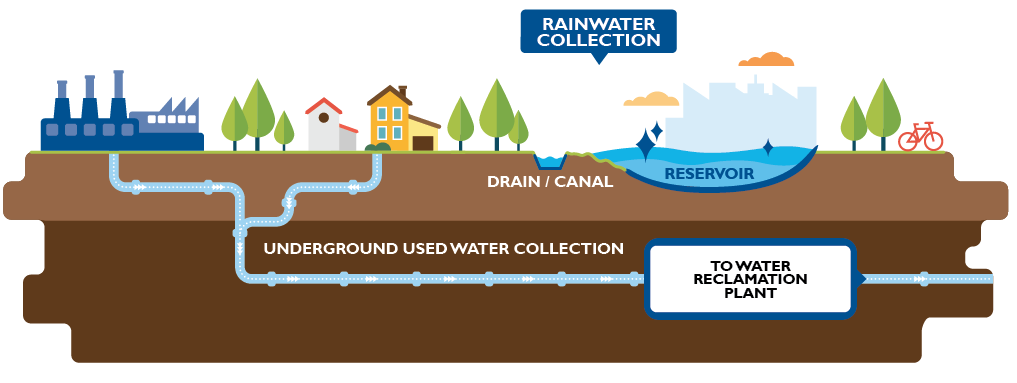About Research
Below are examples of how Operations Research can be used in Singapore and in Asia this Environmental and Water Resource area:
Urban Hydrology
Optimization and statistical analysis of water inflow and its pathway through an urban watershed can be used to design more efficient ways to harvest water for multiple purposes and to preserve its quality.
Ground Water
A major source of water in Southeast Asia is groundwater but much of it has been lost because it is overly polluted. In addition excessive pumping of groundwater leads to subsidence which can cause sink holes and building collapse. OR analysis of groundwater models can improve understanding of the water balance and help determine how to best remediate contaminated groundwater or control subsidence issues.
Offshore Pollution
Pollution of coastal waters can also be modelled. For example models of algal blooms have been used in the US to guide policies for restrictions on nitrogen use. In addition safety issues like the integrity of pumping wells can possibly be analyzed by using signal processing information, which involves optimization and statistics. (Poor integrity of the casement can lead to fluid leaks into the ocean.)
Water Pipe Systems
An elaborate system of thousands of pipes is necessary to distribute drinking water throughout any getting
 The scientific expression of this knowledge is typically captured in complex computer simulation model, often solving partial differential equations based on the principles of fluid mechanics, chemistry, etc.
Hence when using the tools of operations research (such as optimization or uncertainty quantification) the EWRS problem may be computationally challenging because each evaluation of the objective function may require a numerical solution of a complex nonlinear simulation model. As a result, the optimization problem can be multimodal (with multiple local minima) and computationally intense. Efficient methods like linear programming and nonlinear programming are sometimes not applicable for many environmental problems. So for multi-modal problems, this requires development of computationally efficient algorithms for global optimization (e.g. Mueller and Shoemaker, 2014).
OR and analytics can provide powerful tools for analyzing and improving methods for protection of the environment and the supply of clean fresh water supply around the globe. These are very challenging problems than can benefit from improved algorithms including those that utilize high performance computing for parallel algorithms.
The scientific expression of this knowledge is typically captured in complex computer simulation model, often solving partial differential equations based on the principles of fluid mechanics, chemistry, etc.
Hence when using the tools of operations research (such as optimization or uncertainty quantification) the EWRS problem may be computationally challenging because each evaluation of the objective function may require a numerical solution of a complex nonlinear simulation model. As a result, the optimization problem can be multimodal (with multiple local minima) and computationally intense. Efficient methods like linear programming and nonlinear programming are sometimes not applicable for many environmental problems. So for multi-modal problems, this requires development of computationally efficient algorithms for global optimization (e.g. Mueller and Shoemaker, 2014).
OR and analytics can provide powerful tools for analyzing and improving methods for protection of the environment and the supply of clean fresh water supply around the globe. These are very challenging problems than can benefit from improved algorithms including those that utilize high performance computing for parallel algorithms. Prof. Shoemaker has developed with her co-workers RBF surrogate global optimization algorithms for finding the minimum of an expensive multimodal functions for which no derivatives are available. For example these methods can be used with objectives that are computer simulations (that take minutes, hours or days for one simulation) . Environmental and other types of decisions can be greatly assisted with these methods.
pySOT is her global optimization python toolbox (written with Bindel and Eriksson using her RBF algorithms). pySOT has been downloaded 88,000 times. This software can be used on a wide variety of problems including computer model parameter calibration, queuing, inventory, hydrology, aircraft design, etc. The original algorithms for single objective serial optimization (LMSRBF, DYCORS) have since been expanded into algorithms for mixed integer and multi-objective optimization and can now be run in serial or in synchronous or asynchronous parallel. The people in the list below are some of the people in Professor Shoemaker’s NUS group working on algorithms related to environmental applications.
Shen Yichi is currently developing efficient global optimization algorithms for the optimization of expensive, black-box, and noisy systems. The algorithms can be applied to solve a wide range of practical problems, e.g., parameter estimation, manufacturing, hydrology, etc. Analyzing the performance of Environmental and Water Resources Systems (EWRS) is very hard. The system simulation is time-consuming (it can take minutes, hours, or days) and noisy. The relevant algorithms can be applied to overcome the challenge and efficiently manage and optimize these environmental systems.
Xia Wei is a PhD student in Civil Engineering NUS who is using Parallel RBF Global Surrogate Optimization from pySOT to select the best model parameters for computationally expensive partial differential equation models of hydrodynamics and water quality in Singapore lakes. The purpose is to improve the model’s ability to predict and be helpful in water quality management by PUB. This analysis has been conducted on the Singapore supercomputer NSCC with as many as 128 synchronous processors. The hydrodynamics model used takes 5 hours per objective function evaluation. His research considers not only improving algorithms and water quality , but he also addresses also details of parallel computation including the influence of memory on algorithm design. He has also started a project on time series machine learning for water quality prediction
Lu Wei is a recently arrived RF with a PhD in Hydrology (NTU) who is using RBF Global Surrogate Algorithms in pySOT to improve urban hydrology. The simulation model he uses can incorporate changes in land cover (called Best Management Practices-MP) to reduce flooding and to retain water so it can be used after the storm. The analysis involves a stochastic simulation model that describes the distribution of water over the landscape in response to different types of rainstorms. The optimization model is selecting which facilities (e.g. permeable sidewalks, emergency detention ponds, etc.) should be constructed in which locations to best control water within a given budget.
Linjie Zhuang is an RF with a PHD in Mathematical Statistics. She is investigating the statistical and mathematical basis of the RBF Global Optimization methods we have developed and comparing them with Bayesian Optimization methods. Numerically the pySOT-based RBF Global optimization methods usually perform better than Bayesian Optimization methods when tested on problems of medium or high dimension. So she is investigating the causes of those differences.
Limeng Liu and Wenyu Wang are both PhD students in ISEM who are developing new global optimization algorithms using RBF surrogates. Wenyu Wang focuses on multi objective (and many objective) problems and Limeng Liu works on single objective problems of many types including mixed integer and constrained multi-objective with applications in finance. The algorithms they develop can also be applied to environmental problems like lake model calibration or BMPs for managing urban hydrology.


